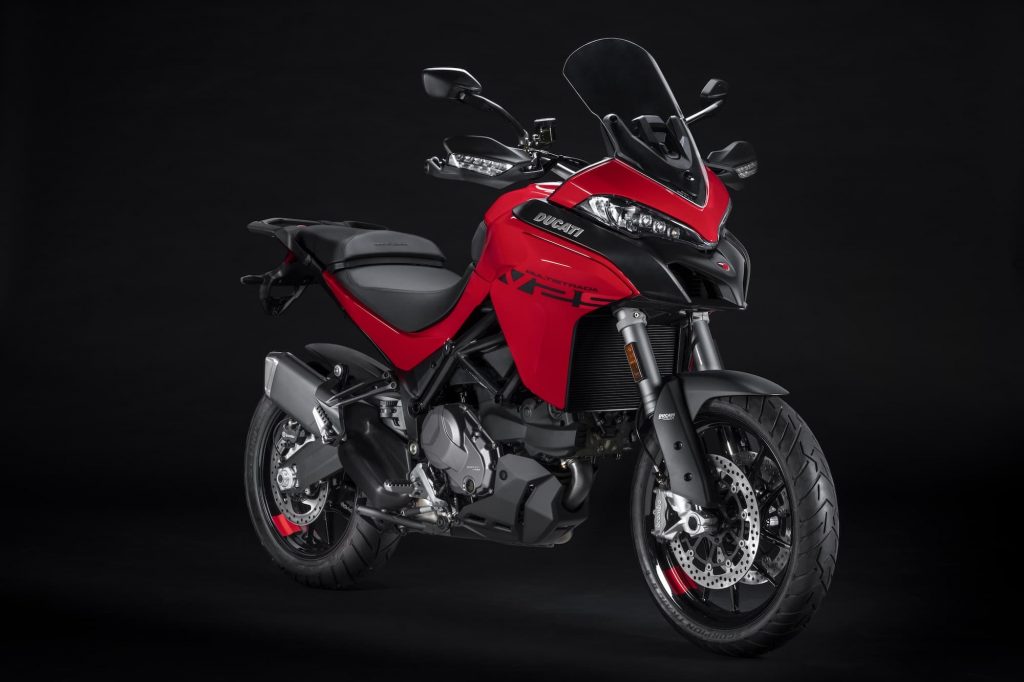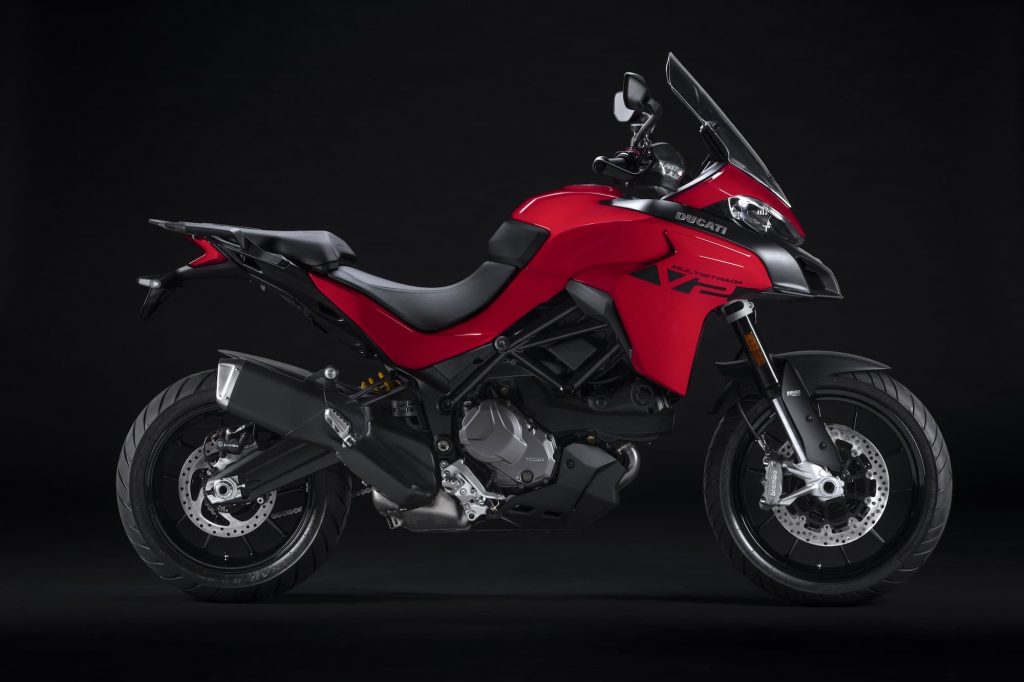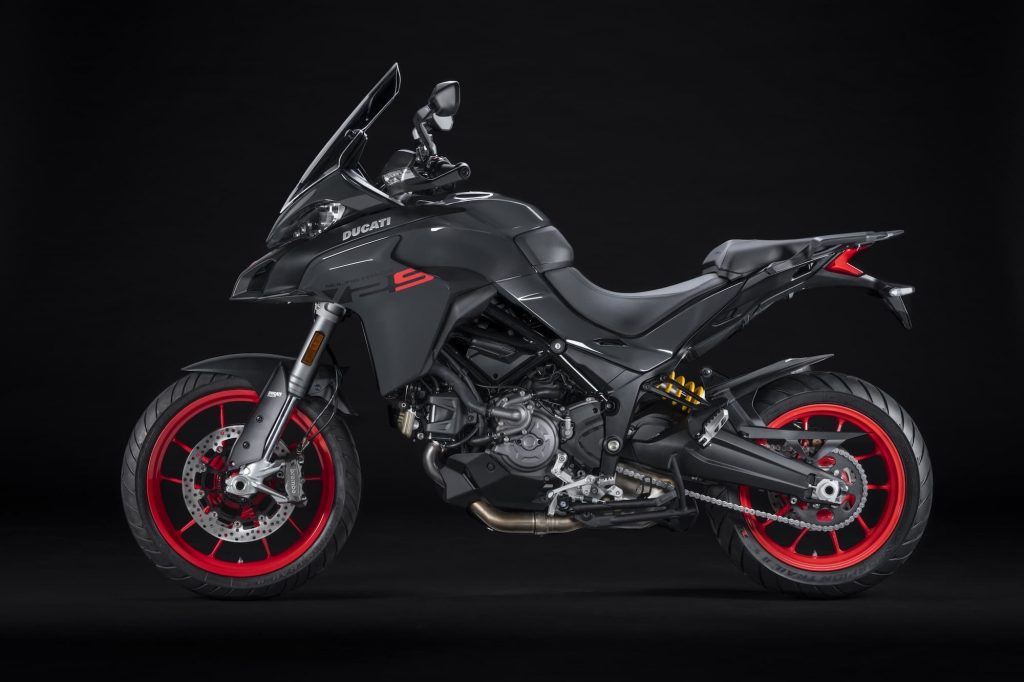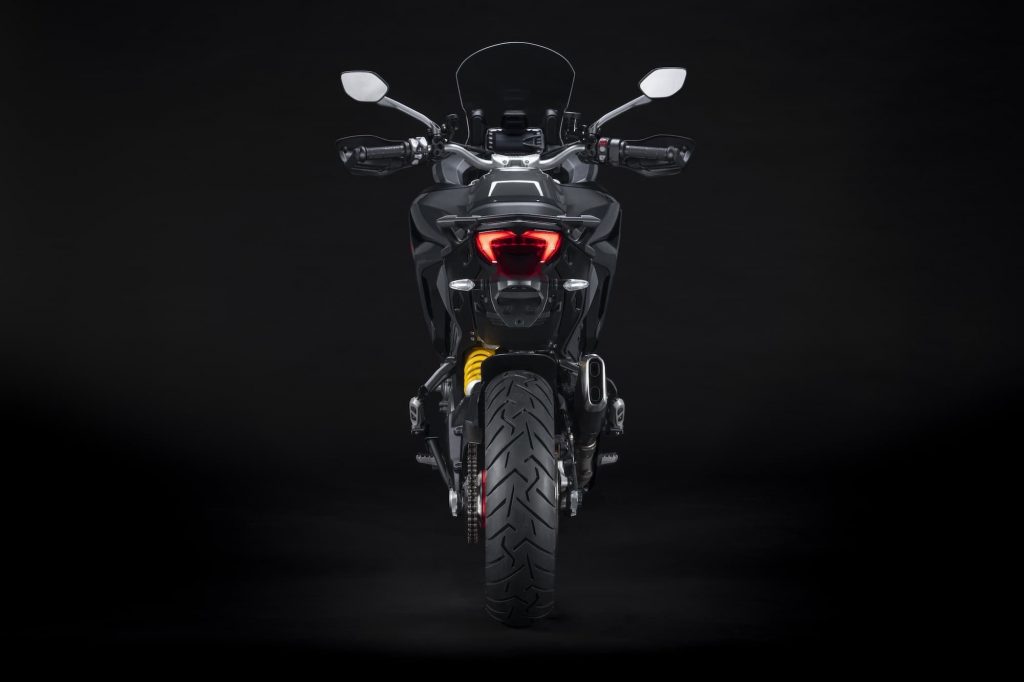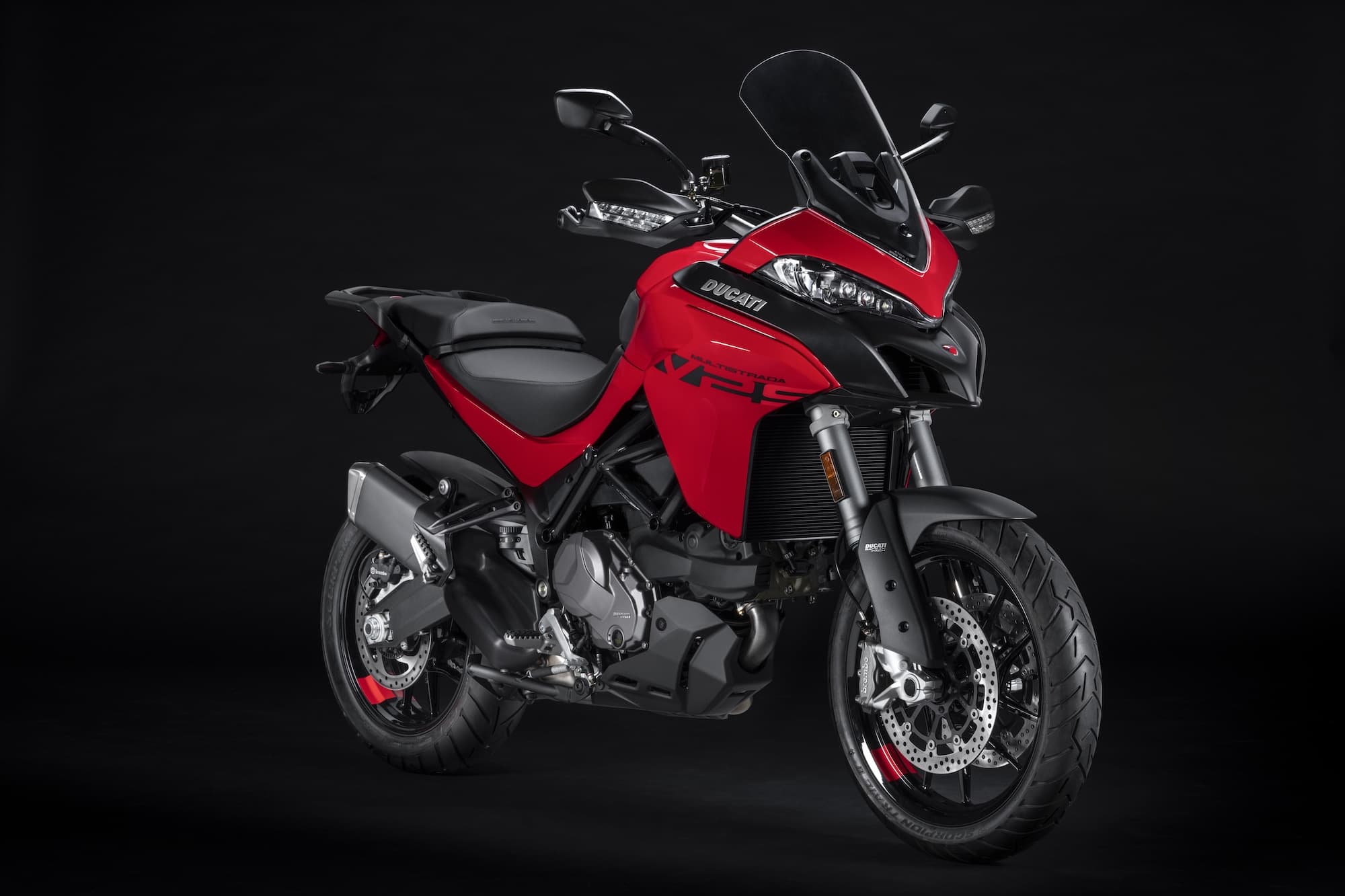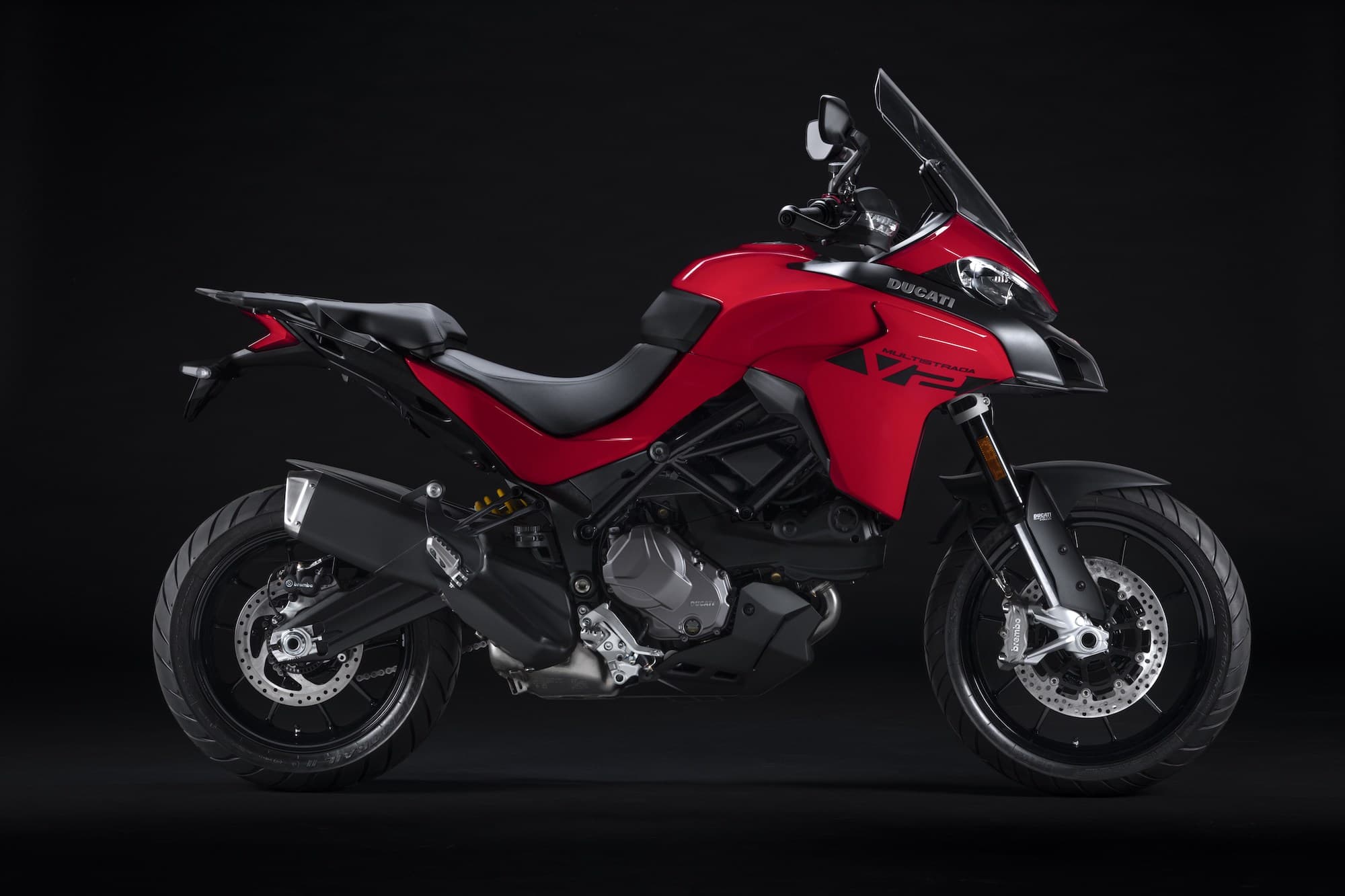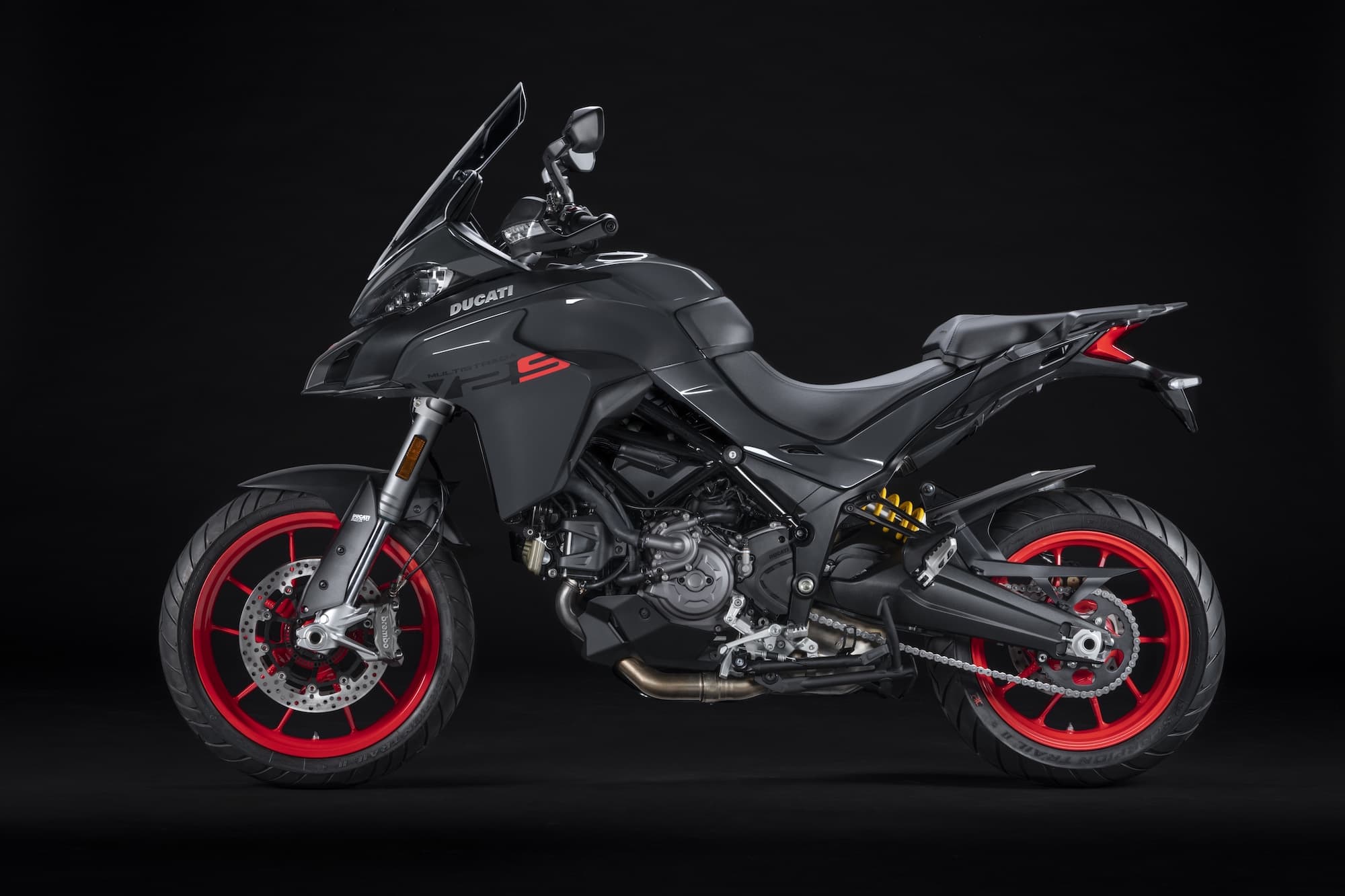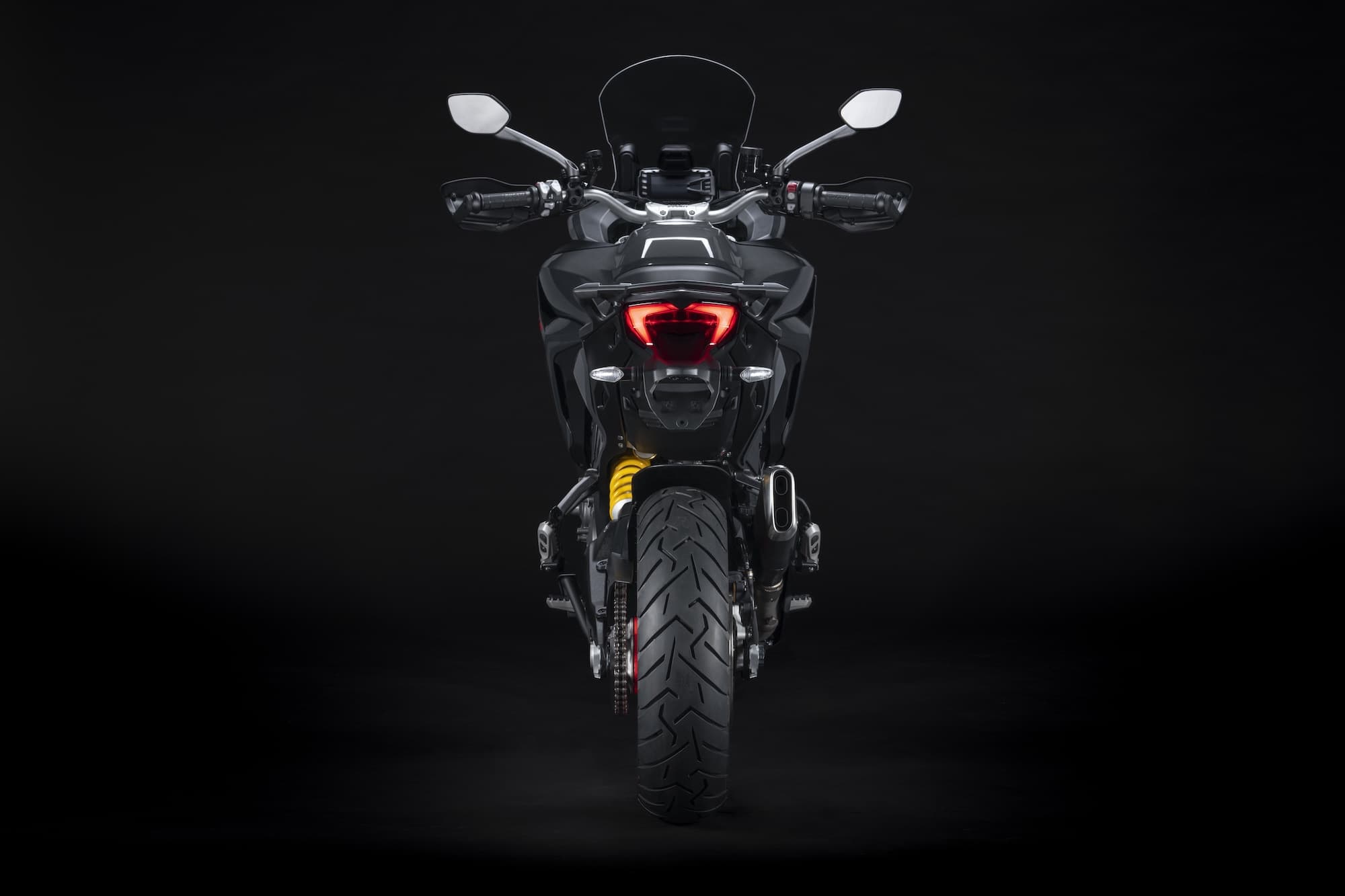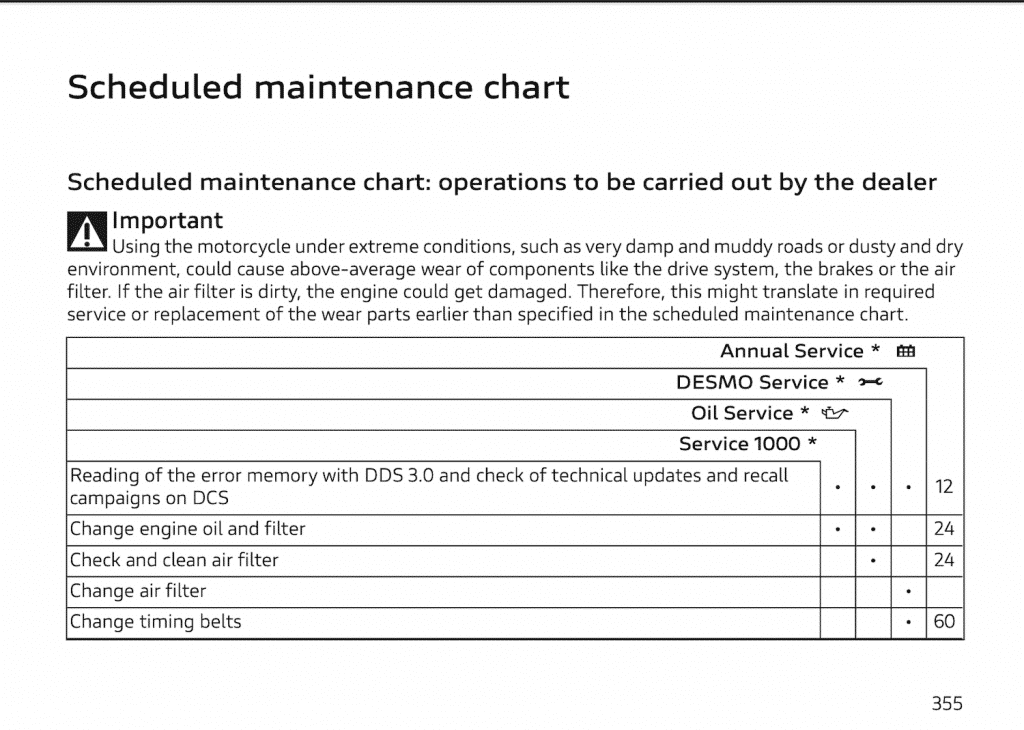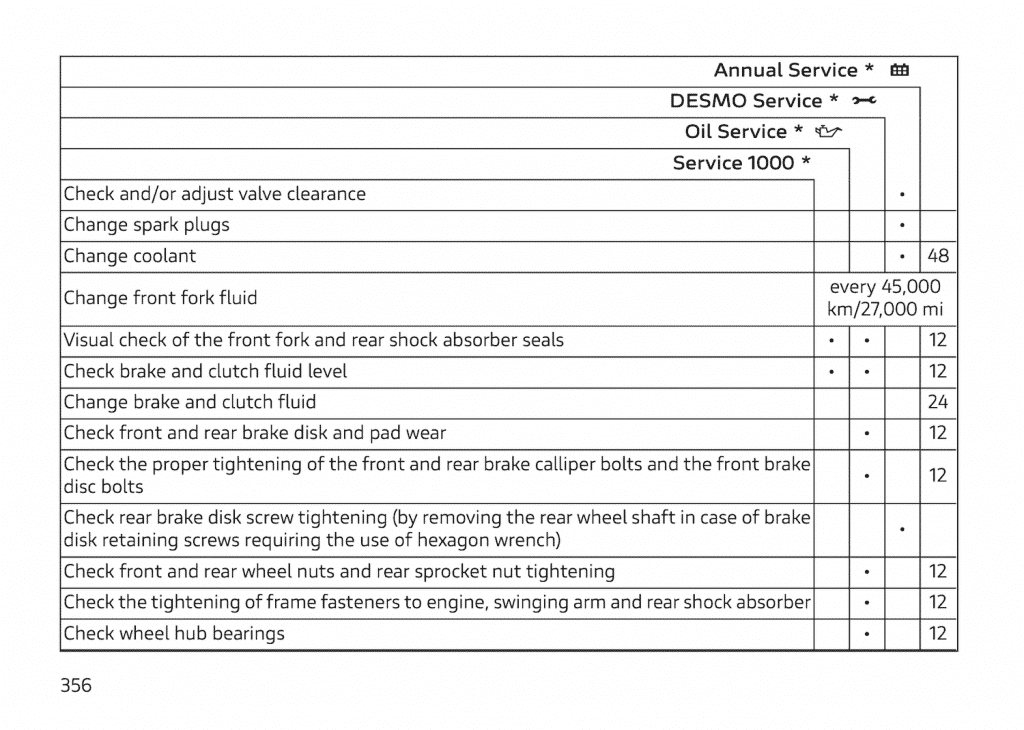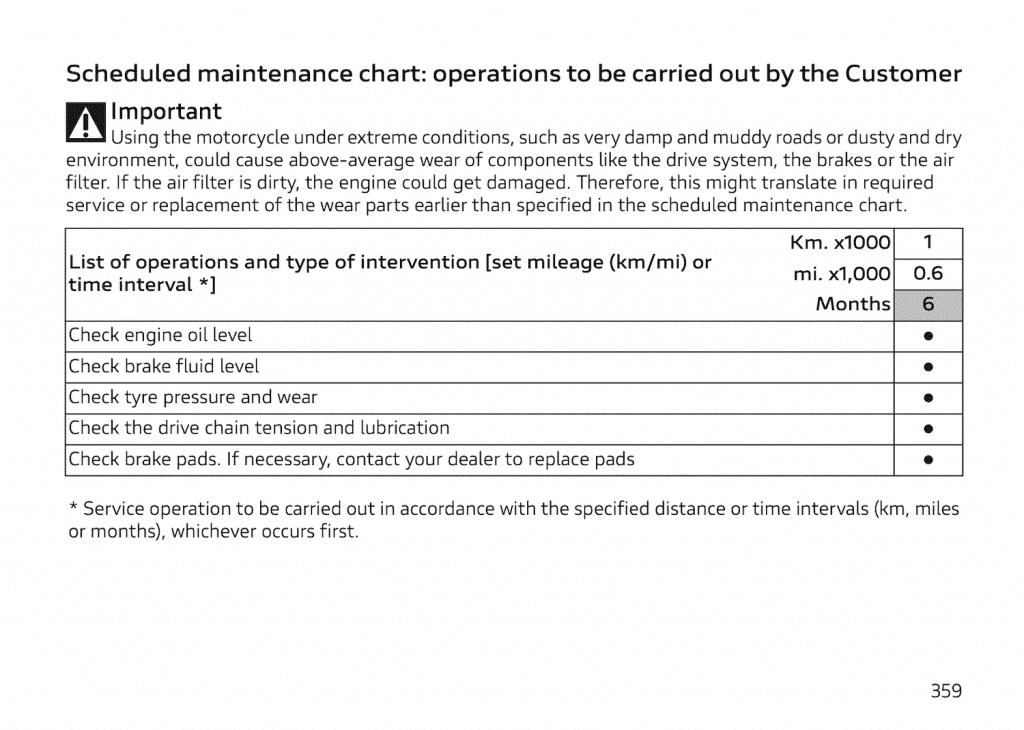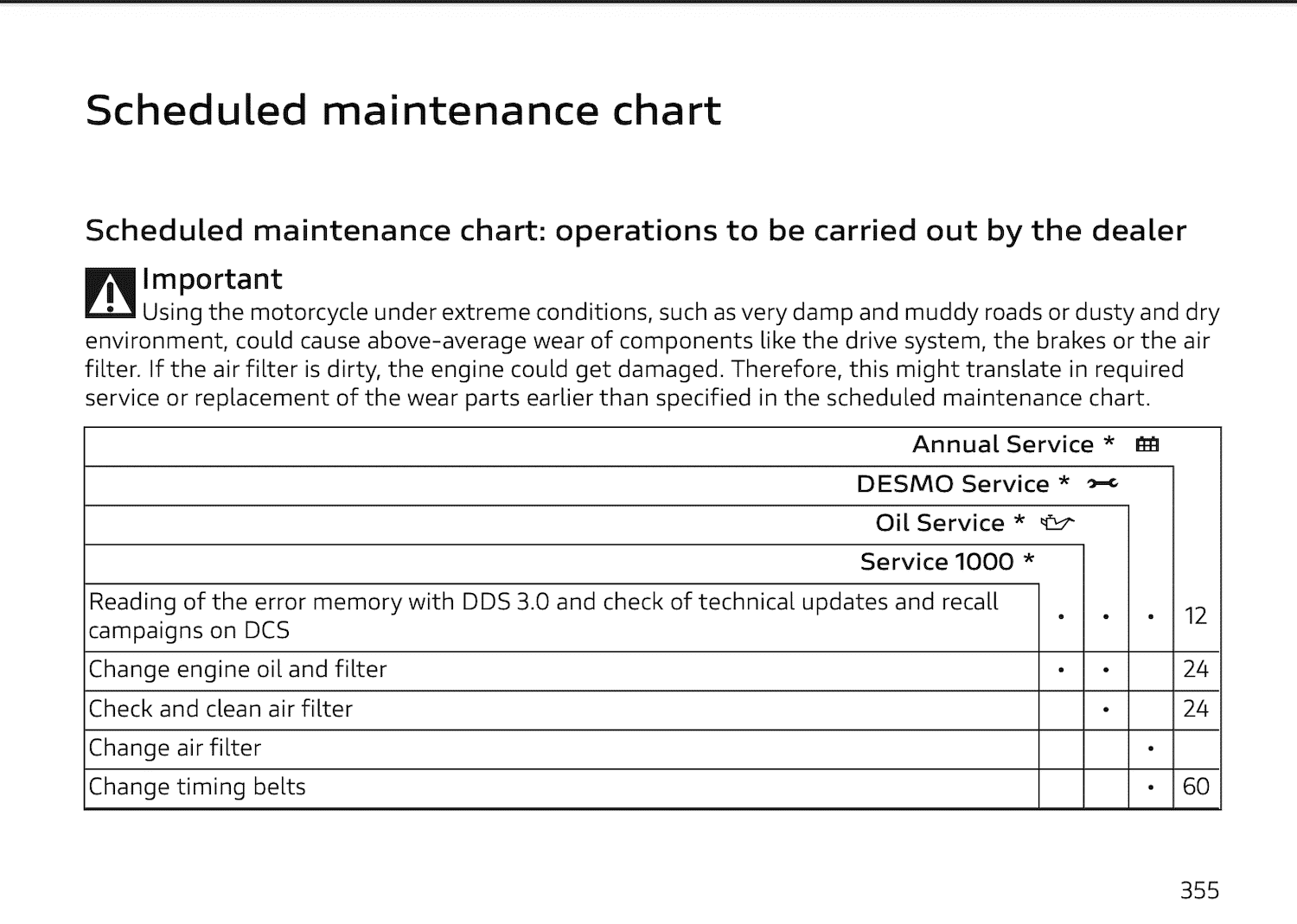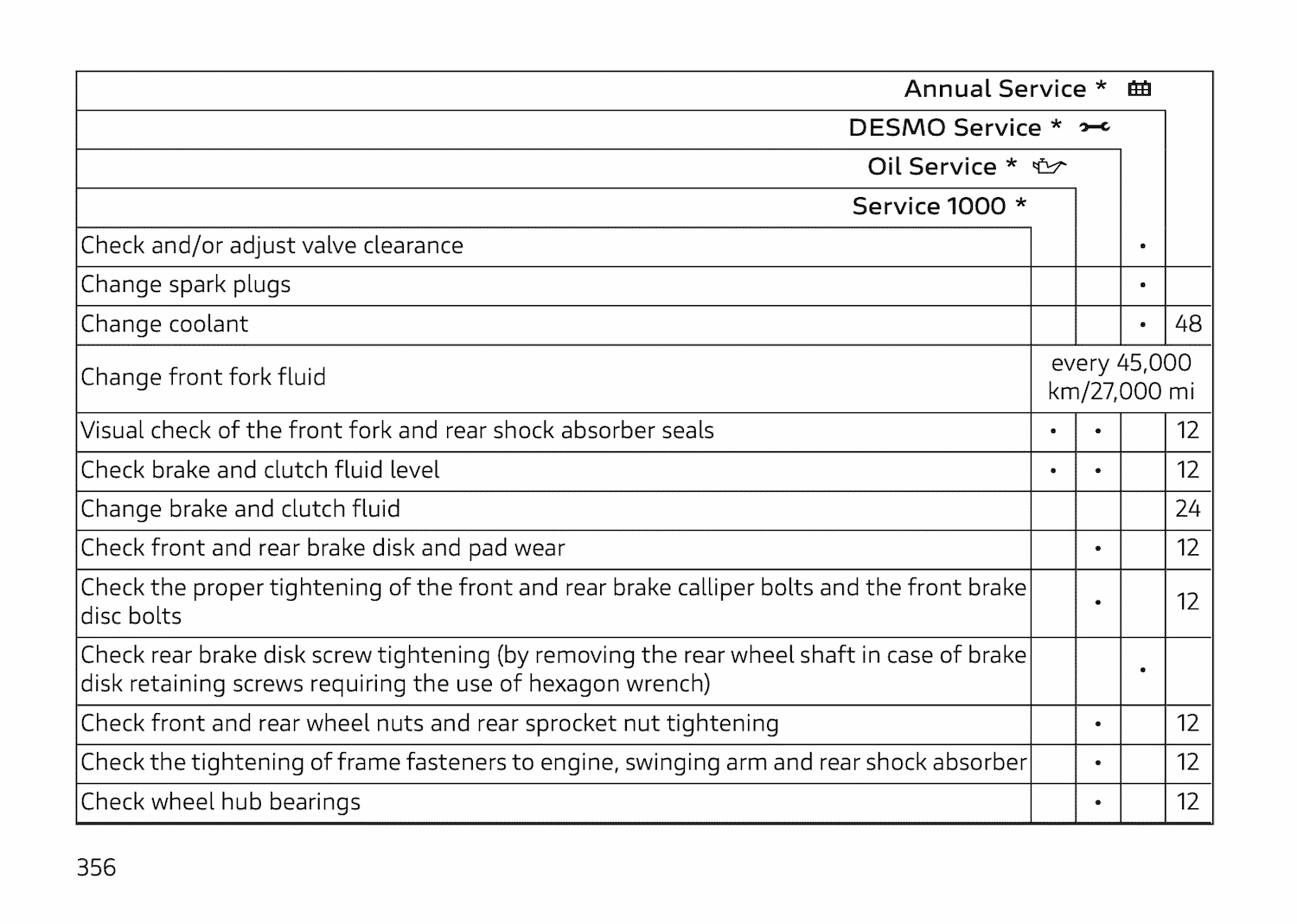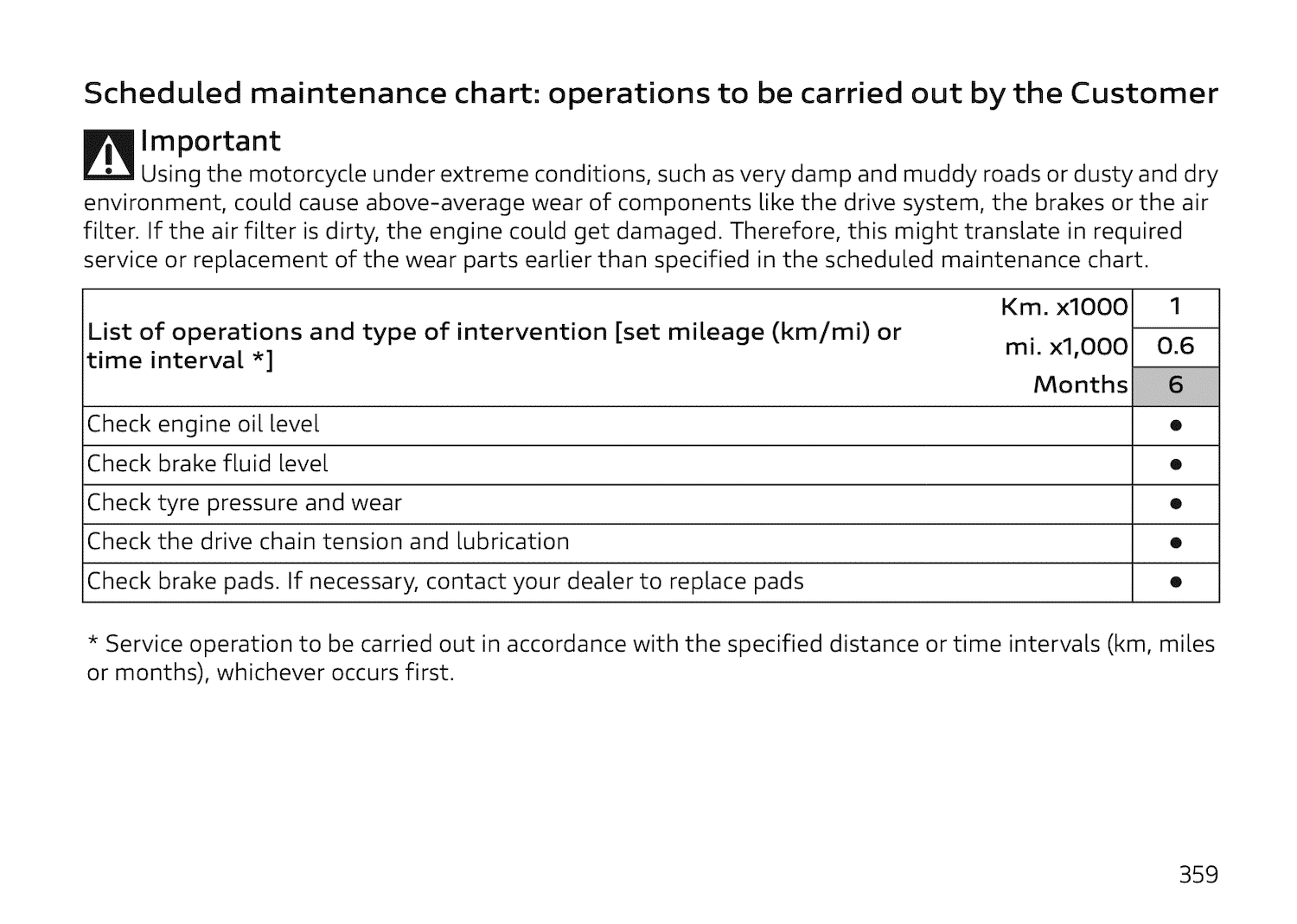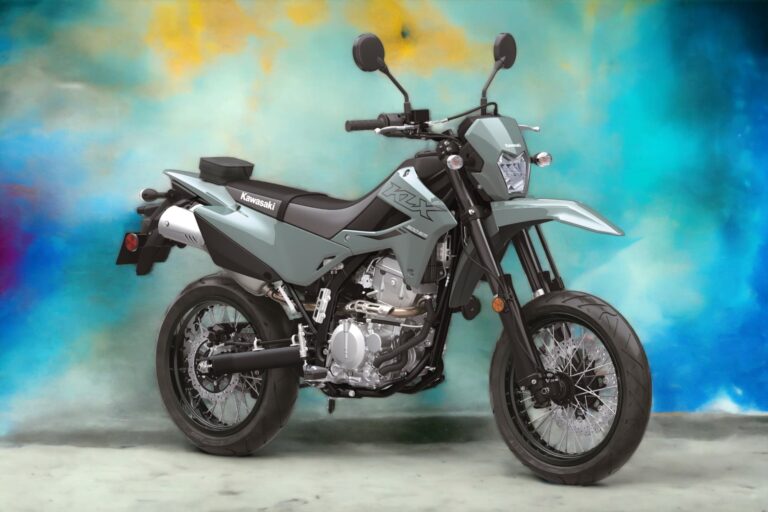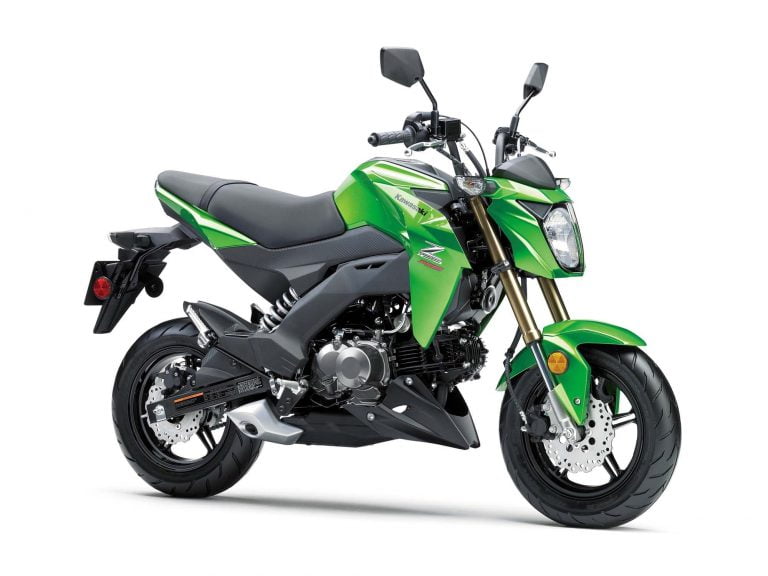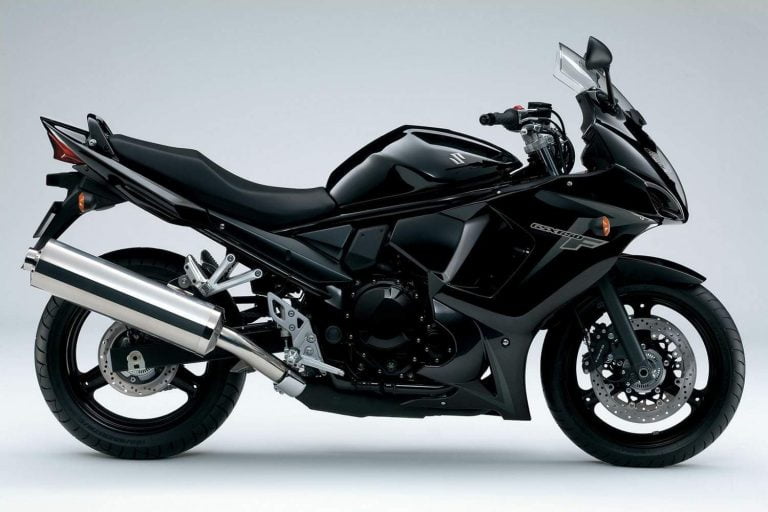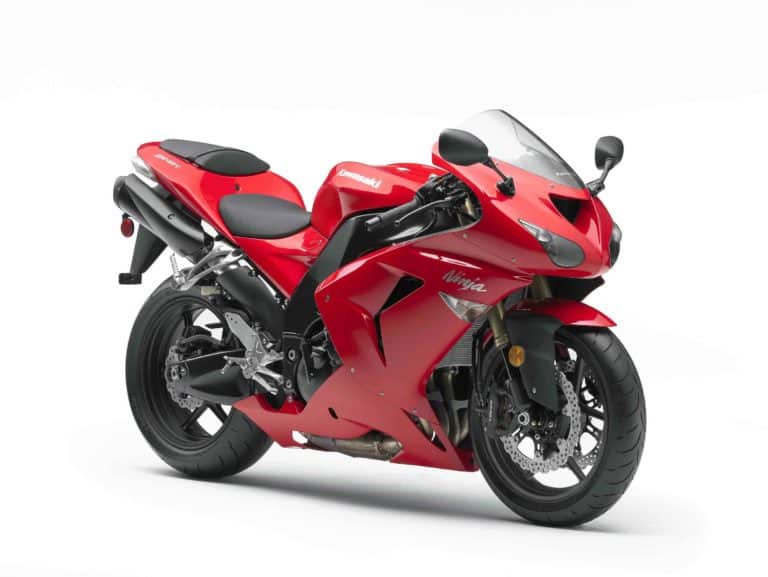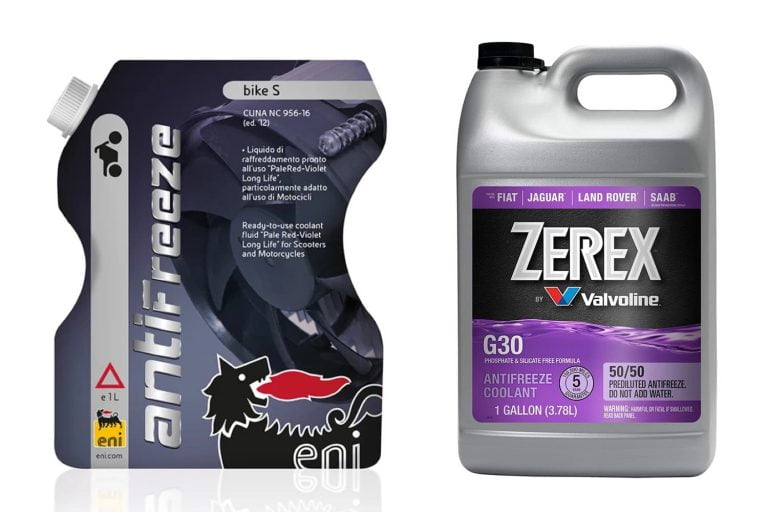Ducati Multistrada V2 and V2 S (2021+) Maintenance Schedule
This is the maintenance schedule and service intervals Ducati Multistrada V2 and V2 S — sourced from the owner’s manual, parts diagrams, and other references. It’s named the V2 to distinguish it from the class-leading Multistrada V4.
The Multistrada V2 and V2 S share a manual and the same maintenance schedule, though some of the external parts are different (primarily the suspension).
The Multistrada V2 takes over from the Multistrada 950 and 950 S as the “smaller” Multistrada. It is conceptually the same bike, but with improved ergonomics (lower seat height), lower overall weight (5kg / 11 lb), and many other minor refinements.
Here are all the models of Ducati Multistrada that Ducati has released:
- Ducati Multistrada 1000DS (2003-2006)
- Ducati Multistrada 1100 (2007-2009)
- Ducati Multistrada 1200 (2010-2014)
- Ducati Multistrada 1200 DVT (2015-2017)
- Ducati Multistrada 950 (2017-2021)
- Ducati Multistrada 1260 (2018-2020)
- Ducati Multistrada V4 (2021+)
- Ducati Multistrada (V2 2022+)
Many of these models come in a number of variants, e.g. S, Pikes Peak, Enduro, and Grand Touring, which change their options including brakes, suspension, wheels, electronics, and external accessories.
The Multistrada V2 has the same engine as the Multistrada 950, as well as other motorcycles in its class sharing the 937cc Testastretta 11-degree water-cooled L-twin engine. So the maintenance schedule shares a lot with the Ducati Supersport 950, for example — even though the motor is tuned a bit differently.
The Ducati Multistrada V2 was released in two variants — the base model and the S mode, the Multistrada V2 S. Mechanically, they’re the same, but the V2 S comes with a few exterior niceties like semi-active suspension (Skyhook Suspension EVO), a TFT display, and standard quickshifter.
The V2 S also comes in “Travel” trim, with side bags, heated grips, and a centre stand.
In the Multistrada V2 and V2 S, the engine produces 83 kW (113 hp) at 9000 rpm, and peak torque of 96 Nm (71 ft-lb) at 7750 rpm — the same power specs as in the Multistrada 950.
This site has links for things like oil and spark plugs from which we earn a commission (which unfortunately nobody can save, not even us). If you appreciate this work, then please use those links. Thanks!
Ducati Multistrada V2 Service Intervals
Maintaining the Ducati Multistrada V2 is like maintaining other mid-range Ducati motorcycles. It has wide service intervals, but still has a Desmodromic valvetrain which means there are 16 valve clearances to check (an opener and closer for four valves per cylinder on two cylinders).
Overall, the Ducati Multistrada V2 has 9000 mi / 15000 km or annual service intervals. At every service, change the oil and filter, and conduct a standard inspection — checking for general condition, leaks, and proper lubrication of all moving parts.
The major Desmo service is every 18000 miles / 30000 km. At this point, check / adjust the valve clearances, change the spark plugs, and change the timing belts.
You also need to change the timing belts every 5 years irrespective of distance.
Apart from that, some other items have irregular distance / time-based service intervals (like changing fluids, e.g. brake / clutch fluid and coolant).
The camshafts are also belt-driven, which means that the belts need to be changed every 5 years per the schedule, as noted above. This is at least an improvement from early days in the 1990s and 2000s, when they were given a life of 2 years.
What you need to service the Ducati Multistrada V2
When maintaining your Ducati Multistrada V2, you need the following consumable parts.
| Item | Ducati Multistrada V2 Spec |
|---|---|
| Oil | Ducati recommends Shell Advance Ultra 15W-50 motorcycle oil for all its 950-class motorcycles, or alternatively “motorcycle engine oil having the same degree SAE 15W-50 and meeting the following specifications JASO: MA2 and API: SM”. One alternative is Mobil 1 15W-50.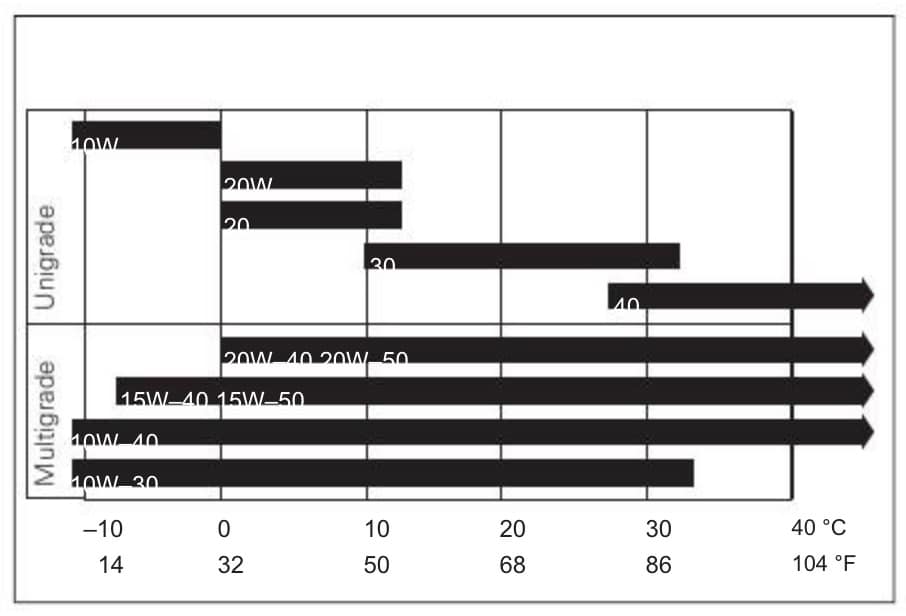 |
| Oil filter | Genuine Ducati part is 44440038A for the Ducati Multistrada V2. You can also use a Hiflofiltro HF204RC race spec oil filter which can be changed with a normal wrench. |
| Brake fluid, Clutch fluid | Ducati requires a DOT for brake/clutch fluid, e.g. Castrol DOT 4 Synthetic. |
| Coolant | Ducati recommends Shell Advance Coolant or a 35-40% mix of Glycoshell, a Nitrite, Amine, and Phosphate-free coolant. Valvoline Zerex G30 meets this requirement as an OAT coolant. |
| Timing belt | Remember to change those timing belts every five years… if you’ve gotten there yet! Part number is 73740252A for the Multistrada V2. |
| Front brake pads | For the Multistrada V2, the OEM part number for the front brake pad is 61340121A. The EBC equivalent part number is FA630HH. |
| Rear brake pads | The part number for the rear brake pads is 61341161A. The EBC equivalent is FA181HH. |
| Air filter | Air filter part number is 42610341B. You can also use K&N part DU-1112. |
| Spark plugs | NGK spark plug code MAR9A-J. |
Regular maintenance for the Ducati Multistrada V2
The manual for the Ducati Multistrada V2 specifies that some maintenance should be done by the user.
Every 1 000 km / 600 miles OR 6 months (whichever comes earlier), perform the following maintenance:
| Ducati Multistrada V2 regular maintenance |
|---|
| Check engine oil level (Top up with Mobil 1 15W-50) |
| Check brake fluid level (Top up with Castrol DOT 4) |
| Check tyre pressure and wear |
| Check the drive chain tension and lubrication (clean/lube with a Motul chain care kit) |
| Check brake pads, and replace if necessary. (FA630HH, FA181HH) |
Ducati Multistrada V2 Maintenance Schedule Table
The following is the list of maintenance operations and to be done on the Ducati Multistrada V2 with a distance or time interval — whichever comes earlier.
We separated the schedule into the service schedule and the standard inspection checklist, for convenience.
Service schedule
Below is the list of major service items for the Multistrada V2 / V2S.
Notes:
- In case of off-road use, it is necessary to perform some maintenance (like chain, air filter, and general lubrication) more often.
- [D] These items below are for Ducati techs and need their standard Ducati maintenance equipment.
| Km x 1000 | 1 | 15 | 30 | 45 | 60 | Time |
|---|---|---|---|---|---|---|
| mi x 1000 | 0.6 | 9 | 18 | 27 | 36 | (Months) |
| Conduct a standard inspection (see below for the checklist) | ✓ | ✓ | ✓ | ✓ | ✓ | 12 |
| Change engine oil and filter (Mobil 1 15W-50) | ✓ | ✓ | ✓ | ✓ | ✓ | 12 |
| Change the oil filter (HF204RC) | ✓ | ✓ | ✓ | ✓ | ✓ | 12 |
| Clean the engine oil mesh filter assembly | ✓ | ✓ | ✓ | – | ||
| Check and/or adjust valve clearance | ✓ | ✓ | – | |||
| Change timing belts (73740252A) | ✓ | ✓ | 60 | |||
| Change spark plugs (MAR9A-J) | ✓ | ✓ | – | |||
| Clean air filter | ✓ | ✓ | 12 | |||
| Change air filter (DU-1112) | ✓ | ✓ | – | |||
| Change brake and clutch fluid (Castrol DOT 4) | 24 | |||||
| Check spoke wheels in compliance with the workshop manual (only for S version with spoked wheels) | ✓ | ✓ | ✓ | ✓ | ✓ | – |
| Check and lubricate the rear wheel shaft | ✓ | ✓ | – | |||
| Check the cush drive damper on rear sprocket | ✓ | ✓ | – | |||
| Check final drive (chain, front and rear sprocket) and sliding shoe wear | ✓ | ✓ | ✓ | ✓ | 12 | |
| Check steering bearings | ✓ | ✓ | – | |||
| Change front fork fluid | ✓ | – | ||||
| Visually check the fuel lines | ✓ | ✓ | – | |||
| Change coolant (Zerex G30) | ✓ | ✓ | 48 |
Standard inspection
Do this inspection at every service interval above.
Notes:
- Items with a # are not required at the first 600 mile / 1000 km / 6-month inspection. But they can’t hurt!
| Standard Inspection Checklist |
|---|
| [D] Read the error memory with DDS 2.0, and check for software version updates on control units |
| [D] Check for technical updates and recall campaigns |
| Check brake and clutch fluid level |
| Check brake disk and pad wear. Change if necessary |
| Check the proper tightening of the front and rear brake calliper bolts and the front brake disc flange screws |
| Check the proper tightening of the rear brake disc and phonic wheel bolts # |
| Check front and rear wheel nuts tightening |
| Check frame-to-engine fasteners tightening # |
| Check front and rear wheel hub bearings # |
| Visually check the proper tightening of final drive front and rear sprocket nuts |
| Check final drive (chain, front and rear sprocket) and sliding shoe wear |
| Check final drive chain tension and lubrication |
| Visually check the front fork and rear shock absorber seals |
| Check the freedom of movement and tightening of the side and central stand (if fitted) |
| Check rubbing points, clearance, freedom of movement and positioning of hoses and electric wiring in view |
| Lubricate the levers at the handlebar and pedal controls # |
| Visually check the coolant level and sealing of the circuit |
| Check tyre pressure and wear |
| Check the battery charge level (from the instrument panel menu) |
| Check the operation of all electric safety devices (side stand sensor, front and rear brake switches, engine kill switch, gear/neutral sensor) |
| Check lighting, turn indicators, horn and controls |
| [D] Reset the Service indication through the DDS 2.0 |
| Final test and road test of the motorcycle, testing safety devices (ex. ABS and DTC), electric fans and idling |
| Softly clean the motorcycle |
| [D] Fill out that the service was performed in on-board documentation |
Tyres and tyre pressures for the Ducati Multistrada V2 and V2 S
The Ducati Multistrada V2 comes with Pirelli Scorpion Trail tyre tubeless tyres. These are mixed-use tyres but with a street focus.
The Multi V2 comes with a 19-inch front tyre — a compromise between off-road performance and on-road handling.
| Wheel | Tyre (Tire) size | Tyre (Tire) pressure (cold) |
|---|---|---|
| Front | 120/70 ZR 19 | 2.4 bar / 35 psi |
| Rear | 170/60 ZR 17 | 2.5-2.9 bar (36-42 psi) |
Find the right tyre pressure based on your load and riding style.
The new-for-2022 Ducati DesertX has much more off-road-capable 21-inch front tyre.
About the Ducati Multistrada V2 and V2 S
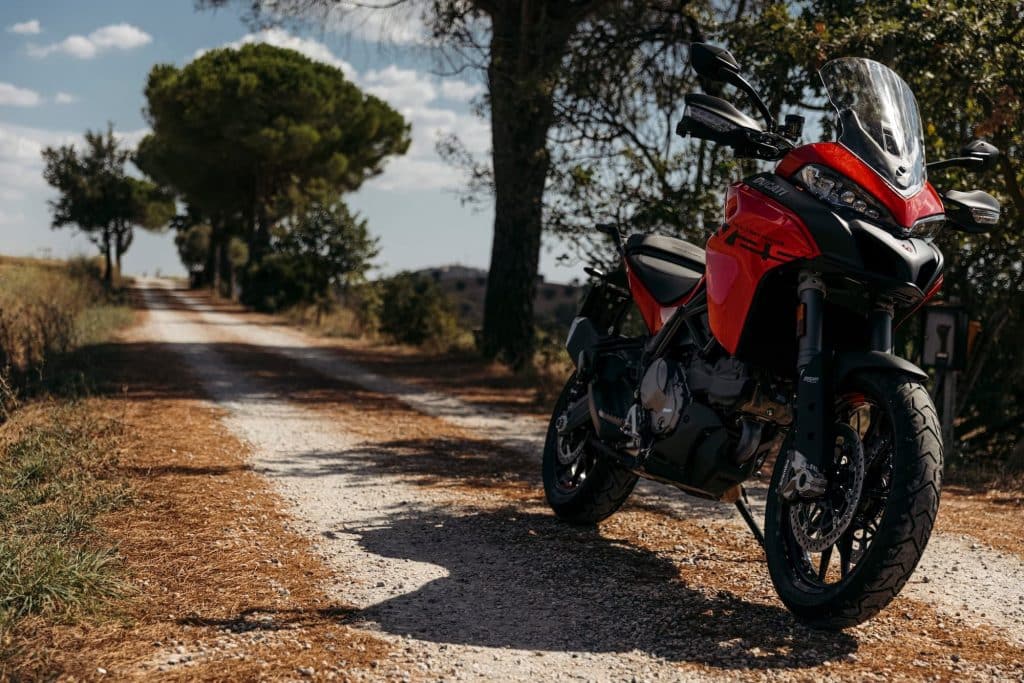
The Ducati Multistrada V2 and V2 S are the “smaller” alternatives to the range-leading Ducati Multistrada V4, which is a lot bigger, more powerful, and of course more expensive.
The V2 Multi also is a return to the roots of the Multistrada. Nearly two decades earlier, the original Multistrada 1000DS had similar power and displacement to the current V2.
Of course, the current 937 cc engine is much smoother and has vastly wider service intervals, thanks to advances in technology and liquid cooling. While the recommended service intervals for the Multistrada 1000DS were 10000 km / 6000 miles, the V2’s service intervals are 30000 km / 18000 miles — a huge difference.
The Ducati Multistrada V2 and V2 S share the same engine. It’s the Ducati “Testastretta” L-twin engine, with desmodromic timing, four valves per cylinder, and liquid cooling.
With a compression ratio of 12.6:1, the V2’s engine makes a peak of 83 kW (113 hp) at 9000 rpm. This is good “sporty” power, and puts it in roughly the same class as other middleweight adventure bikes, like the Yamaha Tracer 9.
Both the V2 and V2S also share the same braking setup — twin 320mm semi-floating discs and raidally-mounted Brembo 4-piston calipers. Both also have cornering ABS.
Where the two motorcycles differ is in the technology supporting them — suspension, electronics.
Here’s how the specs of the Multistrada V2 and V2S differ:
| Part | V2 | V2 S |
|---|---|---|
| Front suspension | 48mm fully adjustable USD fork | 48mm fully adjustable USD fork with “Ducati Skyhook Evo” electronic compression and rebound damping adjustment |
| Rear suspension | Fully adjustable monoshock with remote preload adjuster | Fully adjustable monoshock with “Ducati Skyhook Evo” preload, rebound, and compression damping adjustment |
| Display | LCD | TFT colour |
| Quickshifter | Optional | Yes |
| Cornering lights | No | Yes |
| Cruise control | No | Yes |
| LED headlight | No | Yes |
| TPMS | No | Option |
There are a few things that are options on both, like the Ducati Multimedia System.
One interesting differentiator is that the V2 S has standard cruise control and it’s not even an option on the base model Ducati Multistrada.
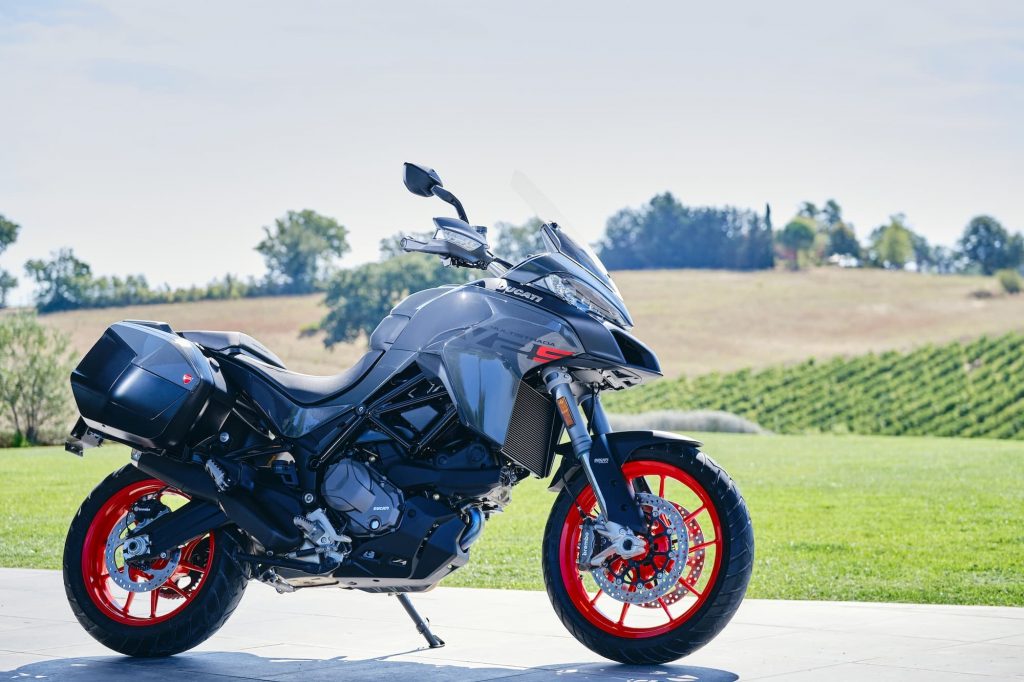
Reference — Ducati Multistrada V2 Owners Manual
The above maintenance chart comes from the owners manual for the Ducati Multistrada V2 S. It’s the same schedule as for the other editions of the V2.
You can download the manual from the Ducati website here.
